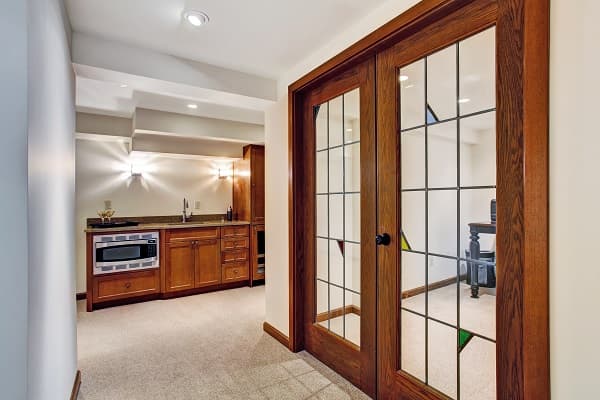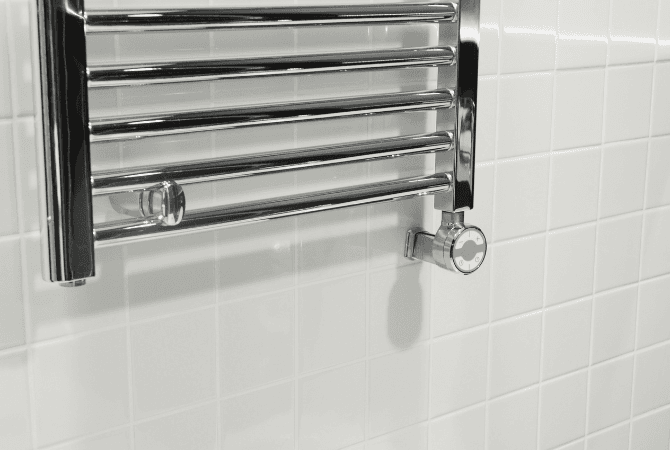
Floating decks may sound like a thing of the future, but we can assure you they’ve been around for quite some time. No, this type of deck does not incorporate new technology.
In fact, a floating deck is simply a free-standing structure, as opposed to standing decks which are attached to your home in one way or another. Not only is a floating deck easier to build than a traditional one, but the steps themselves are simple to follow for a first time builder.
For those who wouldn’t consider themselves carpenters, building anything might feel like a scary undertaking. However, this project will offer an easy introduction to the world of home renovations. So, if you’re ready to roll up those sleeves and get a little messy, read on for our step-by-step guide on building a floating deck.
Here’s everything to know about building a floating deck
Getting started

source: Pixabay
The planning process of any renovation project is crucial to its success. This one, in particular, will require you to gather all the tools and equipment before getting started. The things you’ll need for this job are as follows: concrete deck blocks, circular saw, carpenters square, drills and bits, exterior screws, level, extension cord, chalk as well as a tool for digging.
The material you decide to use for the surface of your deck will directly depend on your area's climate. For a long-standing structure, we are recommending that you use pressure-treated lumber. Pressure-treated lumber is fortified for all types of weather and as an extremely durable material, it will hold up against those spring rains or snowy winters.
Regardless of the material you choose for your floating deck, it is suggested that you draw up a detailed plan or sketch of the work you’re going to be taking on. Our step-by-step guide will offer details for you to build a small, free-standing structure, but you may choose to incorporate other elements such as a pergola, railings or other decorative pieces. Make sure to consider these in your initial sketches.
Initial steps for building a floating deck: draw plan, level & lay deck blocks
The floating deck instructions we are offering will leave your floating deck just 9-inches off the ground. We are using concrete deck blocks, sometimes referred to as cement deck blocks, will be used as a supporting structure.
As mentioned, the initial preparation steps require you to draw a detailed sketch. This will greatly help with the assembly and building process. Before starting this drawing, check local and municipal codes to makes sure you don’t require a permit for this work, and if so, apply for the necessary permits before any building happens.
Once that is complete, draw up a two-dimensional sketch, representing the placement of the frame as well as the deck joists. Your sketch should include all dimensions, aptly indicating width, length and height. Having a visual representation of your plan will allow you to rely on more than memory when buying materials at the hardware store as well as during the building process itself.
The size of your deck will determine how many deck blocks you will be using. For an 8 foot by 10-foot deck like the one we’re building, only 9 blocks are needed. This is an arguably small deck, but our method can be applied and expanded to a floating deck much larger in size.
Of course, the size of the deck you choose to build will depend on various factors including available space, property lines and so on. First, start by levelling the land if you aren’t already working on a level playing field. Once the area is level, lay down the concrete deck blocks and secure them into place by digging small holes for the blocks to sit, and fill them in neatly.
Begin assembling the deck frame
Now that all of the initial pieces are in order, you can begin by assembling the deck frame. First, form a right angle between a longer and shorter 2X4. In our case, we are working with a 117-inch 2X4 and a 93-inch 2X4. Check the angle with a carpenter’s square, and then fasten them together using a drill and two screws.
Pre-drilling holes will make this easier but isn’t necessarily required. Repeat the process on all three corners of the deck until you have a completed rectangle. Once the deck frame has been assembled, you will want to begin attaching the joists.
Support the frame by way of a friend or family member. If no one else is around a trusty concrete block will work just fine. Secure the joist in place using two screws on either side. Keep working with the carpenters square, as this will assure that the structure stays the correct shape. Also, bear in mind that you do not need to build this structure on top of the already placed concrete deck blocks, as the frame will be light enough to transport over if necessary.
Install the frame onto deck blocks

source: Pixabay
Once the frame has been fully assembled, place your structure on the deck blocks and adjust it into place so that it is completely level. If you have a level on hand, it is recommended that you use it and check each deck block individually. If the frame refuses to sit level, determine which block is sitting too high, remove some of the soil and check again using your level. If one happens to be sitting too low, use a shim between it and the deck blocks. Repeat this process until all blocks are sitting at almost the same height.
You don’t want the deck to be level in every direction, as it is necessary to build in a ¼ inch slope away from the house for drainage. Over time, the ground underneath your floating deck might settle, but this can be easily fixed with the addition of a shim. Unlike a traditional deck, a floating deck can be adjusted later making it a relatively stress-free DIY project. Make sure to remember that a large floating deck will require multiple places of internal support, so double up on those concrete deck blocks.
Adding deck boards & finishing touches
Beginning at one end of the deck, start attaching the decking boards to the joists, applying two screws at each juncture. Make sure that before you secure any of the decking boards in place, that the first one is laying square to the frame. This can be done with the carpenter's square. This step is important, as it will determine how the rest of the deck boards lay.
If your first board is askew, then all other decking will end up askew. It helps to use the assistance of something long and straight to guide the decking boards into place. Look for something that extends a few feet over the joist, as this will allow you to position the screws directly in the middle of a joist. The end of the decking boards should be made flush with the side of the outer joist. The decking board may hang over, but do not worry, as it will be trimmed towards the end of the project.
Once the first decking board is in place, you won’t need the extender to align the screws. Instead, grab that carpenter's square and use it to line them up. Make sure the screws are perpendicular to the length of the decking board. You can decide to lay the decking boards as you choose, either fit together as tightly as possible or with predetermined gaps between boards.
It is also important to be certain that none of your deck boards are warping, as this will create future problems. Cover the entire surface of your floating deck with the decking board, trimming off the excess ends but leaving a two-inch lip. Give the lumber a few days to settle and apply a water seal and stain to finish off this beautiful DIY project.
Get 3 renovation quotes for your deck construction project
RenoQuotes.com can help you get quotes for your deck project. If you submit your project to us, we’ll put you in contact with top-rated contractors. Fill in the form on the homepage (it only takes a few minutes), and you will get estimates from trusted professionals.
Dial 1-844 828-1588 to speak with one of our customer service representatives
Looking for something else?
Related articles
The latest industry news, interviews, technologies, and resources.

Cynthia Pigeon
•07 Nov 2023
While thermal insulation is a top priority for most homeowners, proper roof ventilation is also critical to keeping your roofing system in tip-top shape. A roof vent cap is key to achieving this goal.

Editorial Team
•07 Nov 2023
Buying an above-ground pool means enjoying the best of what the summer season has to offer, and that, on a daily basis. Although such an installation has many advantages, it may seem challenging at first to set up and blend in with your current landscape. However, with a little planning and the right material selection, you can create a design that'll complement your overall décor. As such, your pool is sure to please all generations for years to come.

Editorial Team
•17 Dec 2024
If you’re looking to let a little bit of light in between two otherwise dull or dingy rooms, or you’re looking for an alternative to the classic sliding door, then you might be in the market for French doors. These doors can be a beautiful addition to both classic and modern home décors.

Editorial Team
•15 Nov 2024
Getting undressed in a bathroom should always be a treat. However, it often turns into an ordeal. And, as it turns out, the secret lies within the heating system, from which we expect an immediate, cozy warmth. What more could you ask for from a bathroom heater? So, why not get one that’s programmable and doubles as a towel warmer?

Editorial Team
•17 Jan 2025
A lack of space can be seen as an obstacle when thinking about the layout of our home. Of course, that doesn’t mean that it will necessarily be more complicated. Instead, it's all a matter of perception.